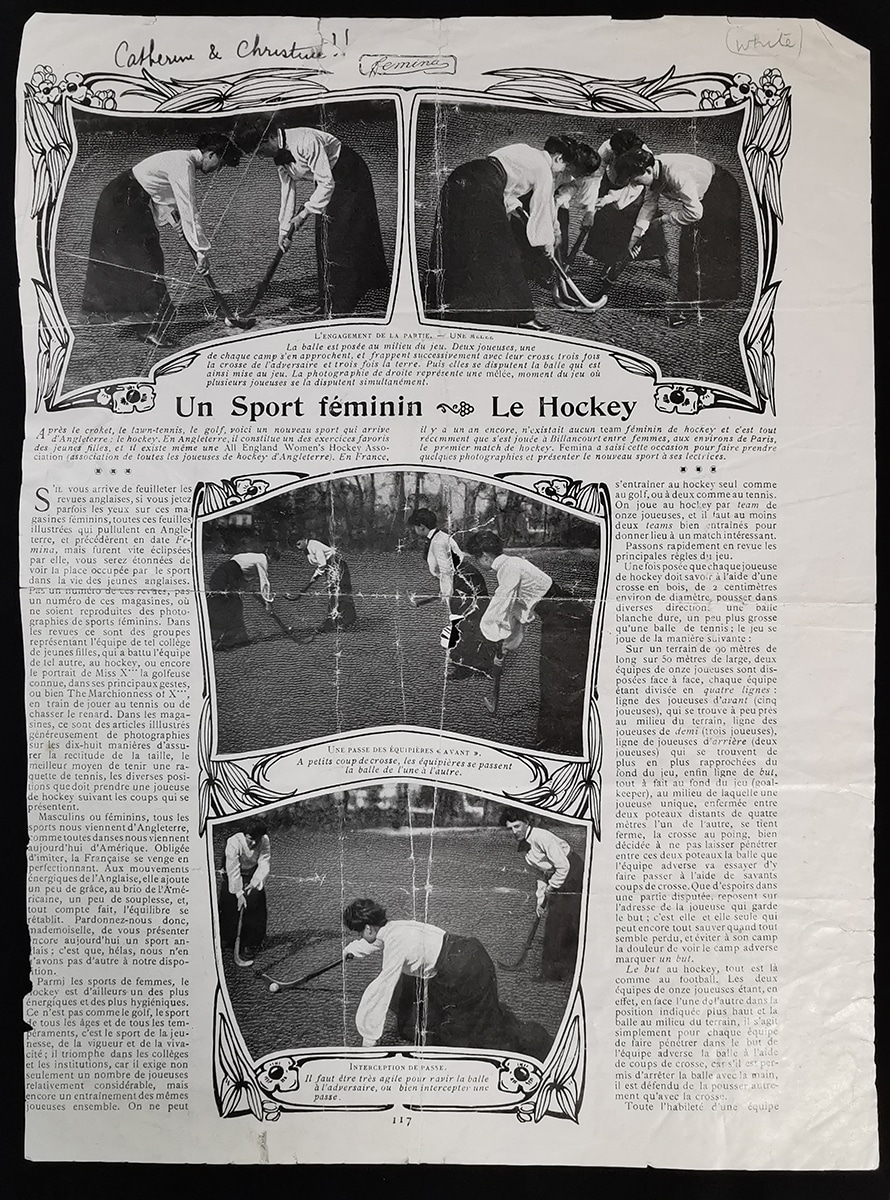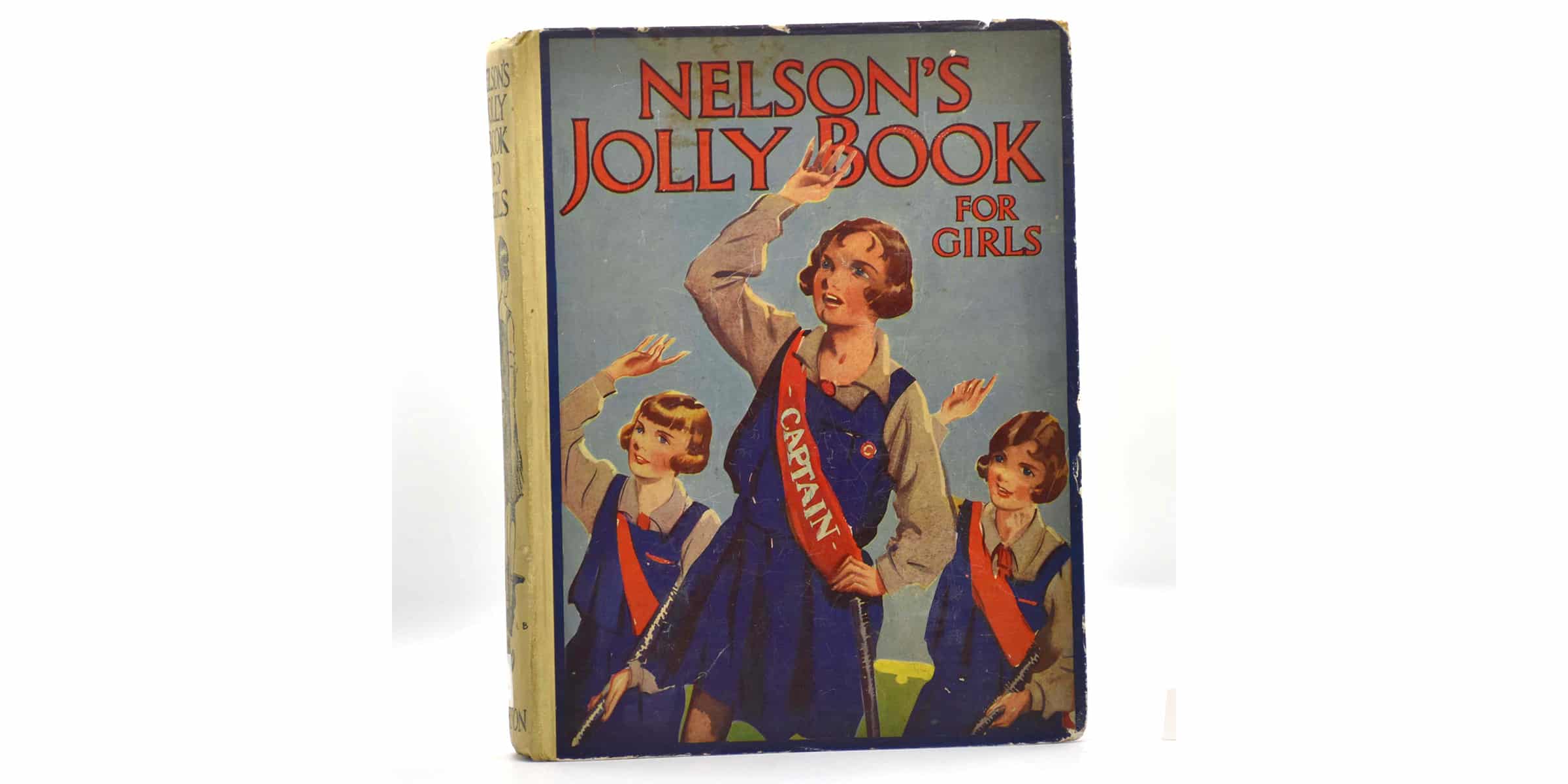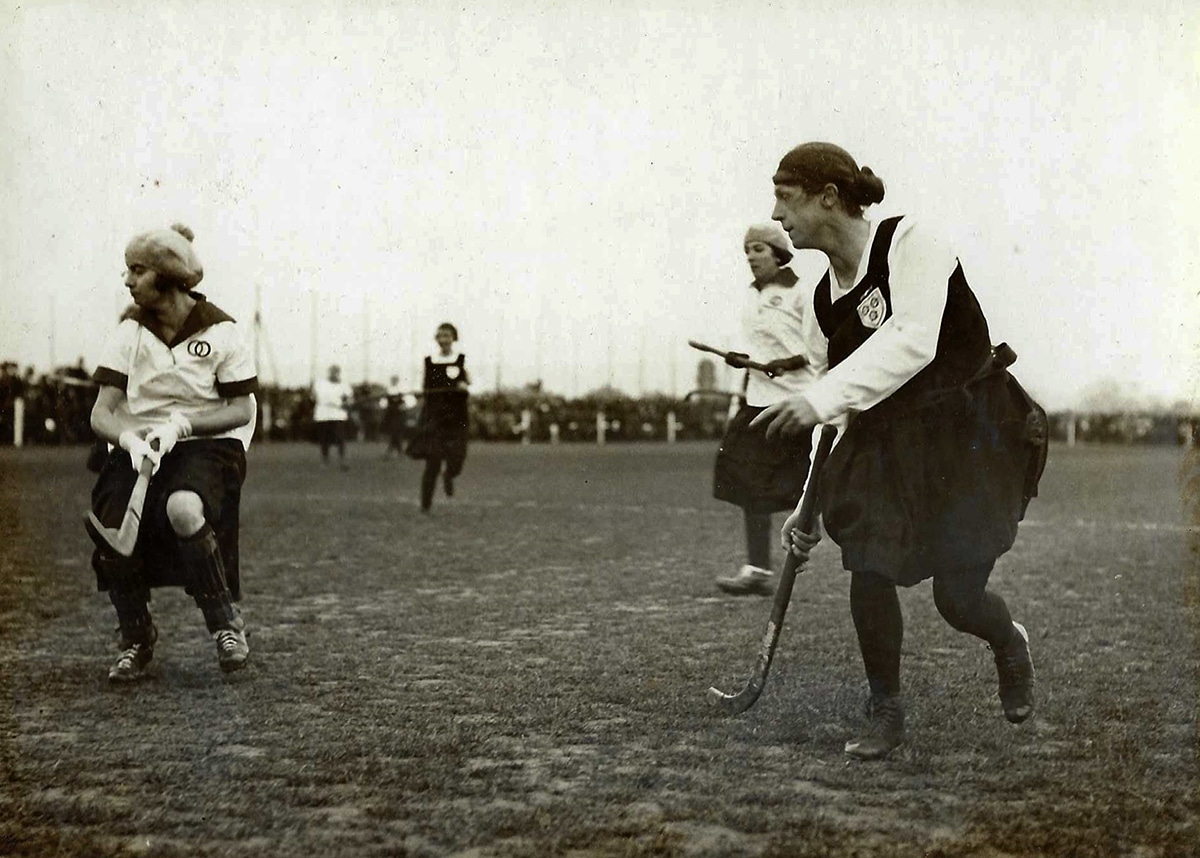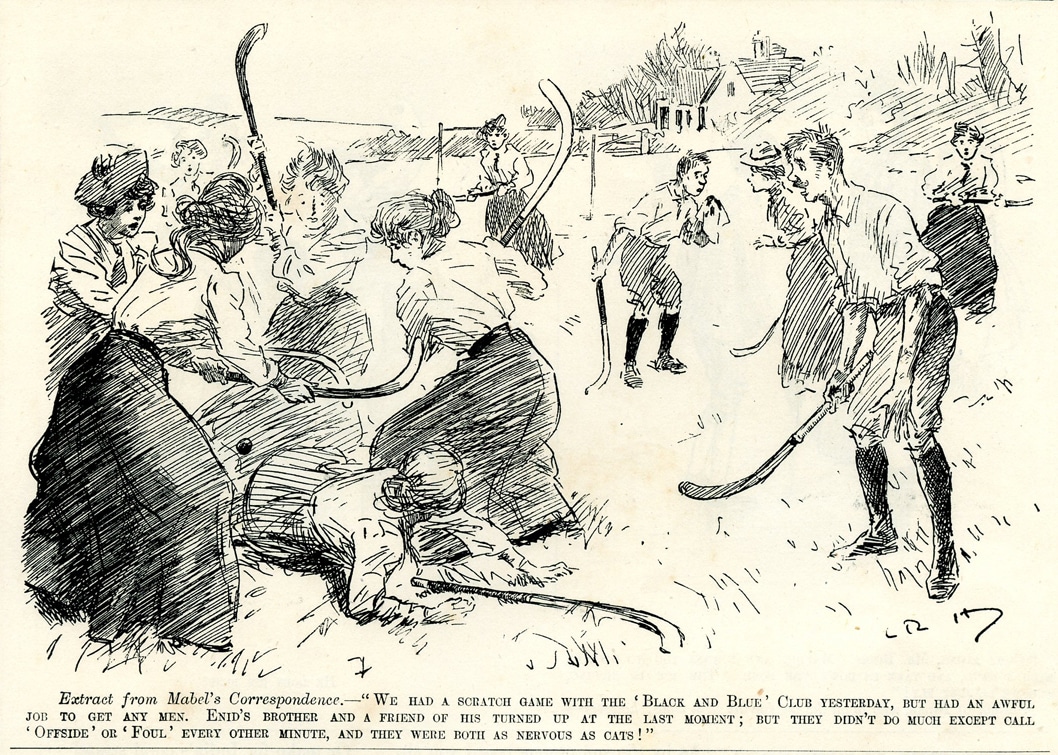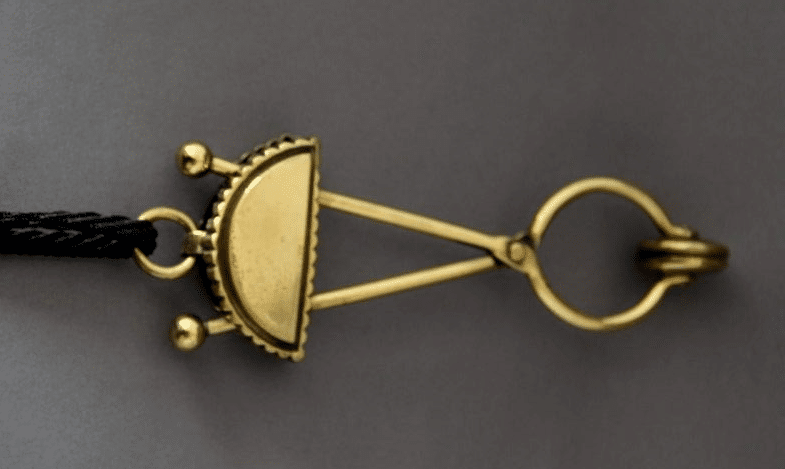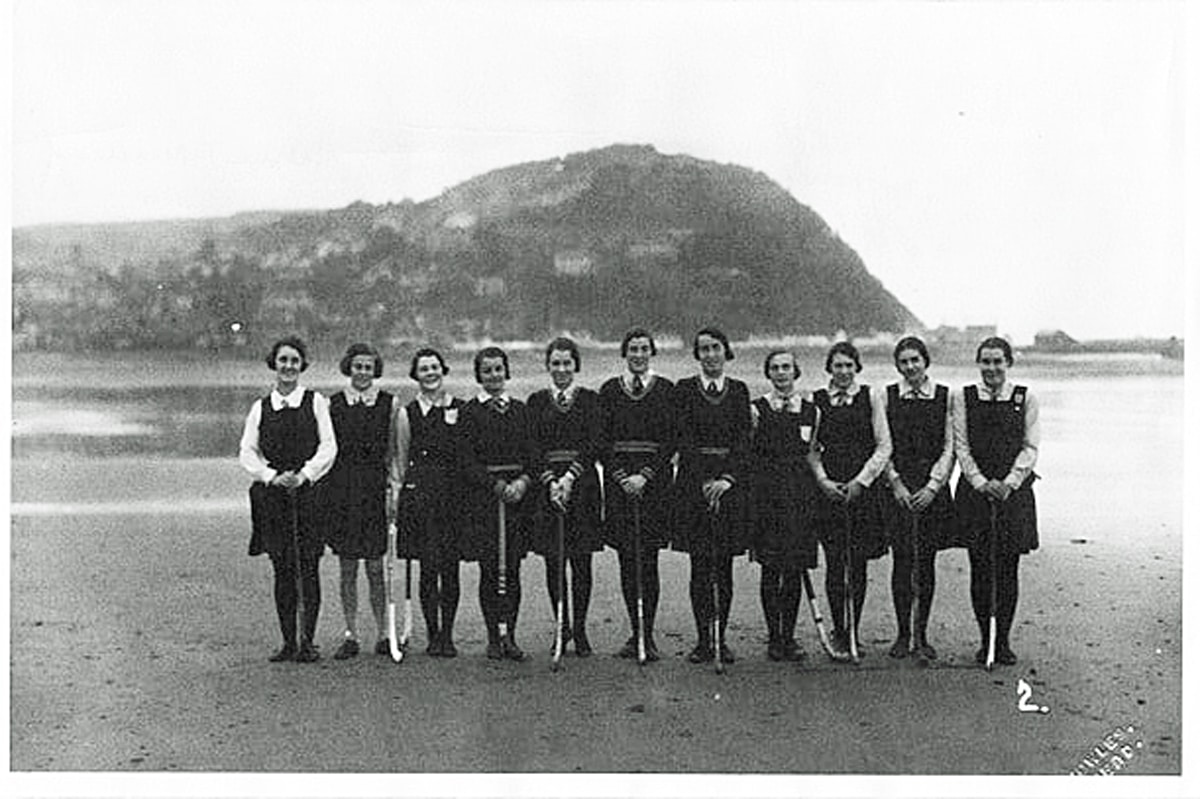By Rebecca Burton, The Hockey Museum volunteer
In Hockey Field and Lacrosse magazine 100 years ago (1924), Nora Hill described her experience with the etiquettes and attitudes of a French ladies’ hockey club. She outlined the differences between French and English women’s club teams.
Kit
Nora first described the French women’s kit.
“They wore short navy pleated skirts, white duck jumpers with blue collar edged with red braid and a coquettish blue beret with a fat red pompom perched on the top”.
The French wore bandages around their legs and ankles with two pairs of stockings over the top. The outer pair being regulation blue wool stockings with red turndowns. Knees were kept bare which Nora suggests is typical of French clubs. The women’s boots were boys’ football boots with the “essential” white laces. For protection, the team were said to have generally used pads, sometimes with knee pads.
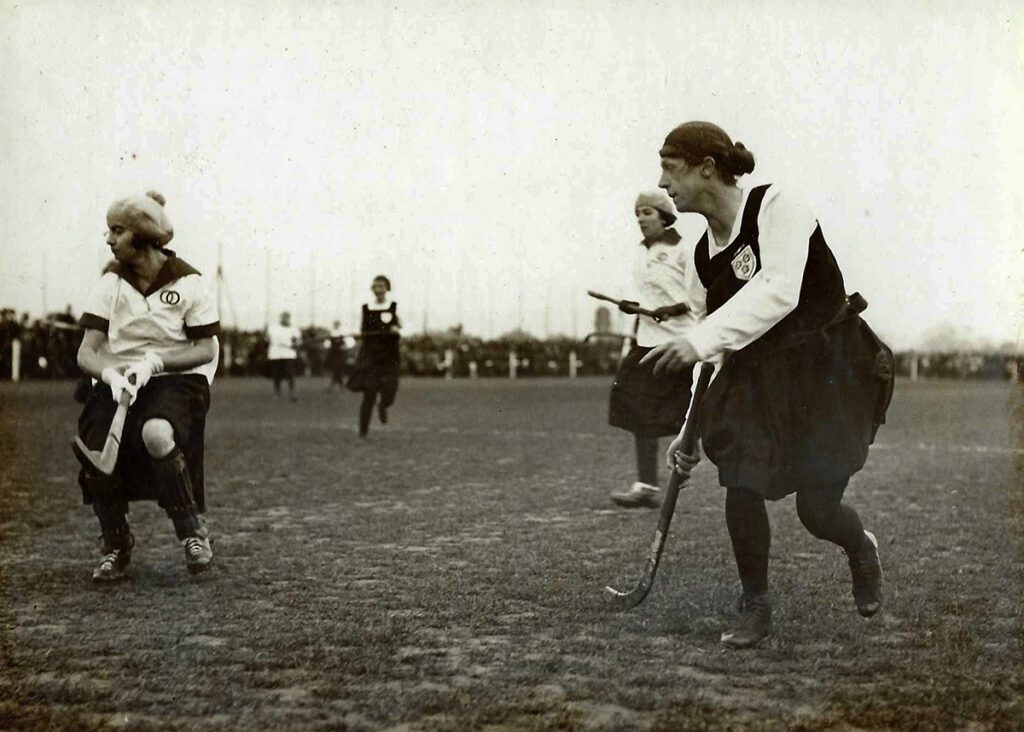
England women vs France. An action shot from 3 February 1923.
As part of the museum’s research into the Marjorie Pollard collection, photographs and descriptions of the first international match between France and England came to light. On 3 February 1923 the two countries came together and there were very noticeable differences between the two ladies’ teams. The French women wore their iconic winter berets compared to the bare heads of the England team. The museum’s previous article on this event also notes a difference that Nora Hill does not, which is the length of skirts used in matches. The French team were reported to be at a disadvantage due to the longer length of their skirts, with the English women’s shorter pinafores giving them the opportunity to run faster and not be held back by the additional material.
Coaching
The French coach greeted the girls by their first names (!) along with jokes and gibes. Nora comments that she initially disliked the coach but confesses that by the end of the game she regarded him with respect and even admiration. She touches on his coaching style and how it was “unconventional” to an English player.
“Did a girl miss a shot at goal, then he remarked on her eyesight. Did she fail to pass, then he shouted at her until almost hoarse. A foul (pronounced “fool” in French) brought an immediate whistle and a torrent of reproach”.
She notes that the main difference between English and French coaching styles was the amount of talking that took place. She describes how the French break down and analyse every shot and evaluate it with approval or criticism. The French team is shaped to be incredibly vocal during and after their games. Nora referenced their loud “schoolgirlish spirit and camaraderie” which was “very unlike” the atmosphere of an English club. She ends by stating that French games are “dignified” but there is “never the businesslike silence of a good English game”.
Attitudes
In the Hockey Field and Lacrosse article, the French team is complimented for their “earnestness” towards the game. Despite hockey being a relatively new sport to France at the time, the women treat the game with soul and professionalism. Unlike England, French schools did not play hockey at the time and the fitness of the French women’s team was vastly inferior. Interestingly, a French player confided in Nora that she was shocked by the age and stamina of the English team.
“Why, there were women of nearly forty running like girls of twenty; how happy I should be if I thought I could ever run like that at forty.”
Nora ends the article with well wishes for the French team and highlights their hardworking determination for improvement. She hopes for her own English team to keep a “friendly eye upon them” and believes they will see great changes in the next few years.
Below her article, Nora appended some of the French hockey language. She notes that some are just English terms pronounced in a French fashion:
Boulie – Bully
Foule – Foul
Touche – Touch Line
French Positions on the field: aile gauche (left wing), aile droite (right wing), centre, mi-centre (mid centre), arriere (back), le gardien du but (goalkeeper).

The French women’s international team pictured with their “essential” white laces and protective shin pads in 1923.
From the AEWHA Collection, University of Bath Library.
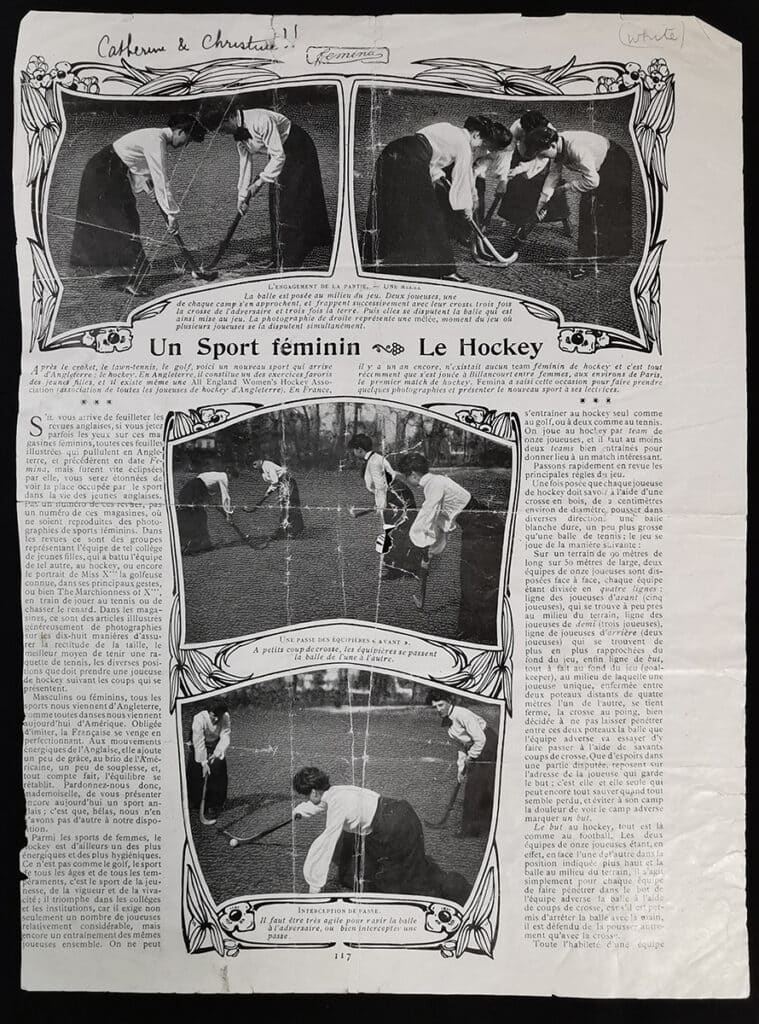
A hockey article from the French publication Femina, 15 April 1904.

